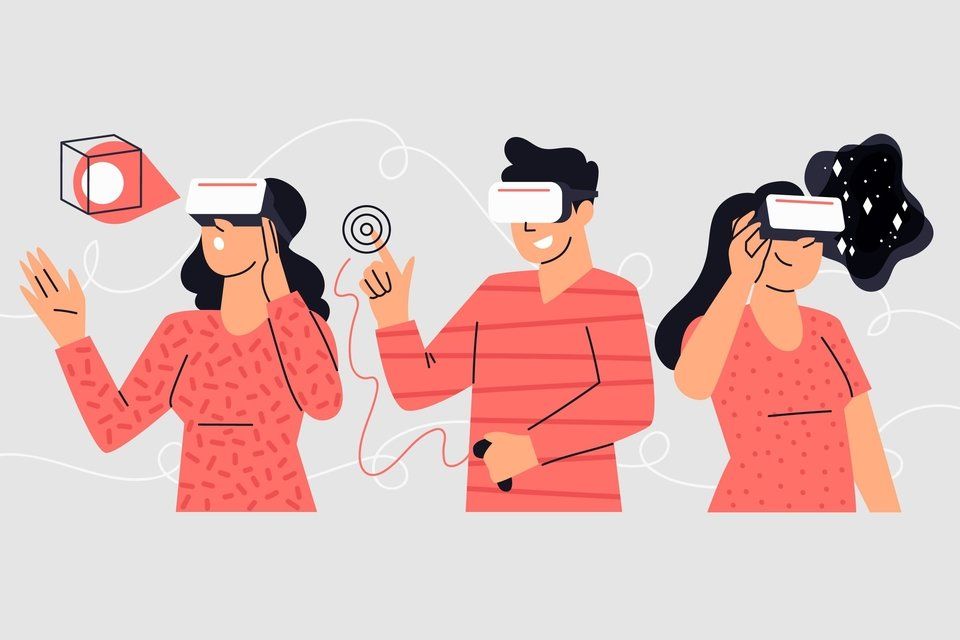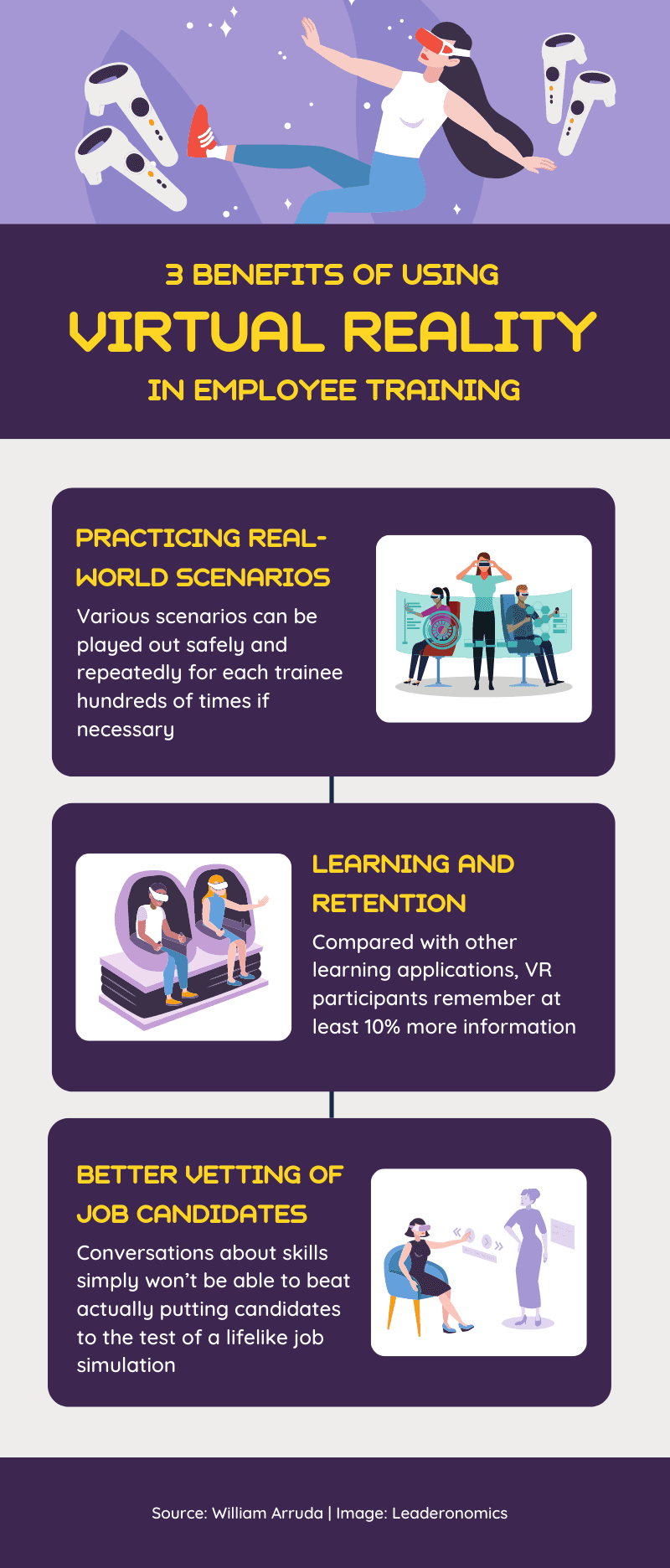3 Reasons Virtual Reality Can Amp Up Employee Training

pikisuperstar on Freepik.com
Home is where the heart is. Thanks to the pandemic, home is also where the office desk is, where children go to school, where we work out, where we play, where we eat . . . and where we learn (at least for now).
Working from home has ushered in a whole new era of fun and exciting capabilities. These innovations include everything from the rapid expansion of telehealth and other virtual care services to the speedy adoption of virtual reality training for employees in a wide range of industries.
As 2022 unfolds and the pandemic stubbornly refuses to relent, companies big and small should pay special attention to growth opportunities of a home-based workforce. To get (and stay) ahead of the competition requires unconventional thinking and bold action, and VR training simulations can help organisations make learning and upskilling both fun and efficient—no matter where the worker is located, and often on a timetable that fits their family’s schedule.
With VR Training, The Possibilities Are Virtually Endless
Of course, the existence of virtual reality training isn’t new. VR simulations have been used in so-called high-risk careers for decades, such as teaching pilots how to fly 400-plus-ton machines and helping medical students learn how to perform in frantic emergency room settings. Within the past few years, the increased functionality of this technology, coupled with decreasing costs and barriers to entry, have caused VR training possibilities to blossom exponentially. There aren’t many industries that VR hasn’t infiltrated.
Tax services company H&R Block now uses virtual reality training to place its new call-center hires in realistic scenarios where they can practice soft skills like empathy and active listening. Client hold times have been slashed in half as a result. T-Mobile employed VR training to help its managers prepare for its 2020 merger with Sprint. The program was so successful that T-Mobile expanded its use of virtual reality to include diversity, equity and inclusion training, such as supporting team members who have gone through traumatic instances of racial injustice.
Those are just two of so many examples. Why did forward-thinking companies move so quickly into the VR fray? Results. A study by PwC found that VR training was far more effective than traditional training methods like classroom education or self-paced online learning at creating an emotional bond to the content being taught and instilling the confidence that employees need in order to best perform their jobs.
A Better Way to Simulate Skills
If you are intrigued by the power of virtual reality but remain skeptical about incorporating it into your training offerings, here are three more reasons why VR is a smart investment:

Infographic by Leaderonomics: 3 Benefits of Using Virtual Reality in Employee Training
1. It allows for practicing real-world scenarios.
Whether it’s walking machinists through shop-floor procedures or having oil-rig workers practice dangerous manoeuvres on offshore platforms, the key is to create a simulation that mimics real-life situations. From there, let them practice as much as possible. Practice, after all, makes perfect.
“In an interactive virtual environment, you can set up real-world scenarios that can drive home training in a way that an in-person classroom environment often can’t. This is especially useful when training employees on the use of specific equipment or machinery,” says Saagar Govil, CEO and chairman of Cemtrex, in his recent article for HR Daily Advisor. Cemtrex is an AR and VR technology company that focuses on driving innovation in a variety of sectors, including industrial manufacturing, digital applications, and intelligent security.
“Various scenarios can be played out safely and repeatedly for each trainee hundreds of times if necessary. VR and AR can offer safer training environments for industries such as manufacturing and oil and gas during a pandemic, but many businesses have found that’s far from the only benefit these modern technologies can provide.”
2. It promotes learning and retention.
For years, scientists have been studying why virtual reality promotes better learning and memory retention. Ultimately, it boils down to experience. If you read an article about the Eiffel Tower and then go visit it in person, what details do you think you’ll recall: the words on a page or the creak of the elevator as you ascend the structure?
VR is such an effective teacher because it replicates a real experience. Employees who undergo VR training get to visualise a 3D environment and perform actions in an immersive space. Compared with other learning applications, VR participants remember at least 10% more information. Best of all, you can run virtual simulations as often as necessary without fear of making a critical mistake. That judgement-free repetition breeds recall.
Read More: How Digital Learning Benefits Your Organisation
3. It allows for better vetting of job candidates.
Résumés and interviews will eventually become outdated ways to evaluate job applicants with the emergence of VR. Multiple conversations about skills, desires, and competencies simply won’t be able to beat the opportunity of actually putting candidates to the test of a lifelike job simulation.
Imagine: Rather than speak endlessly about the duties of a job, employers will be able to put applicants through the paces of the position via virtual reality experiences. MGM Resorts is one organisation that’s already using this technology to vet job candidates, allowing them to try its hotel and casino jobs digitally. They get to see both good and bad elements of the role—perfect for helping to determine whether certain people are fits and cutting down on future attrition in the process.
Education is essential for gaining a competitive edge in your career. VR trainings give companies a chance to integrate that education into the corporate philosophy, presenting more opportunities for employees to move into new areas of the business. It’s a smart investment that can make every employee feel right at home.
Related: How Can Managers Use AI To Find the Right People?
This article was originally published in Forbes. For more information on Personal Branding, please visit williamarruda.com
Are you interested in digital learning? Check out this amazing learning app called Necole. Necole is a state of the art learning platform that curates personalised learning just for you. To find out more about Necole, click here or email info@leaderonomics.com
William Arruda is the bestselling author of the definitive books on personal branding: Digital YOU, Career Distinction and Ditch. Dare. Do! And he’s the creative energy behind Reach Personal Branding and CareerBlast.TV – two groundbreaking organizations committed to expanding the visibility, availability, and value of personal branding across the globe. For more information on Personal Branding , please visit williamarruda.com.





